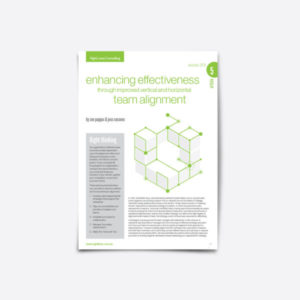Publications
Right Lane Review – The collective pivot
COVID-19 has dominated our news feeds, our conversations and our headspace. What is unique is that we are experiencing this collectively. How we experience it will differ but this pandemic affects all of us. This pandemic has demanded a lot of us and it will continue to for some time. However, it too will pass and it is important to think about the kind of organisation you want to be on the other side of this disruption. In this edition of the Right Lane Review we outline processes, tools and practices that will support you to move towards adapting.
Read MoreRun better virtual meetings by focusing on what (really) needs to be done
Virtual meetings have fast become our new normal; and while principles for running effective in-person meetings remain highly relevant, we need to adjust our approach and focus to get the most out of our virtual interactions.
Read MoreProductivity in the midst of a pandemic
Supporting teams to be more productive is about making productivity a habit which requires a three-step approach: first, constantly reinforce priorities; second, make it easy to start and hard to stray away from them; and finally, build in rewards to sustain the habit.
Read MoreRemote yet accountable: How to create a culture of accountability while working remotely
We explore the necessary conditions for a culture of accountability and how to foster these conditions when working remotely by focusing on two factors: the right cadence and using the right digital tools.
Read MoreNew year, new challenges: Ideas to inspire action
At Right Lane, most of our work centres on helping our clients develop and implement better strategies. Because it’s so central to our practice, we try to stay on top of every development in the academic literature and practitioner discourse. We reflect regularly on our project learnings, and we endeavour to harness our own ideas and advance knowledge in the field.
This collection ‘New year, new challenges. Ideas to inspire action’ includes some of our best thinking with regard to resource allocation, team effectiveness, strategy implementation, and getting full value from strategy workshop outcomes.
Helping hands promote successful change
The evidence shows that change management efforts frequently go awry. We’ve found that using a mnemonic, the HANDS of change – Hardwiring, Ability, Narrative, Desire and Support – can help our project teams to address what’s required for success. This article explores a case study to show how the helping HANDS of change function in practice.
Read MoreOur purpose at work: Serving organisations that do good
Helping organisations that do good do better is central to our management consulting practice. The work we do with for-profit and not-for-profit organisations that play a constructive role in creating a better world is above all else why we come to work and what gives us meaning and fulfilment in our professional lives. Since 2018 we have been fortunate enough to serve close to 100 clients that do good – for-profit and not-for-profit clients that are having a positive social impact. Here is a summary of the challenges we recently helped some of our clients solve.
Read MoreRight Lane Review – Fresh approaches to old challenges
‘If you always do what you’ve always done, you always get what you’ve always gotten’. In this edition of the Right Lane Review we discuss how to break away from formulaic approaches to strategy and planning and explore powerful new approaches to tackling long-standing challenges.
Read MoreLiberate resources by running meetings more effectively
The benefits of meeting effectiveness can be tangible and significant. In one organisation we worked with recently, the executive successfully recovered ~44% of the time they spent in meetings.
Read MoreEnhancing effectiveness through improved vertical and horizontal team alignment
An organisation’s effectiveness is fundamentally dependent upon the alignment within and between the teams on the frontline. We outline five practical steps you can take to improve vertical and horizontal team alignment.
Read More- « Previous
- 1
- 2
- 3
- Next »










